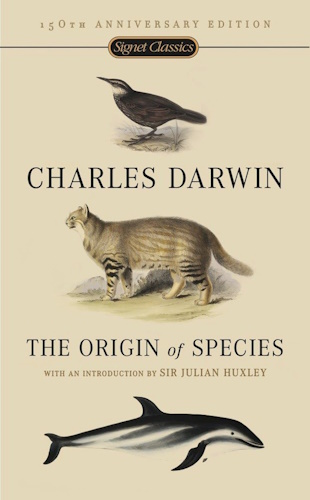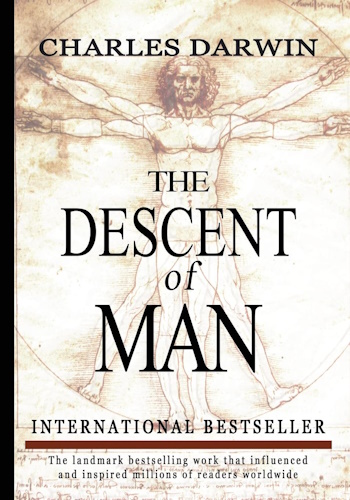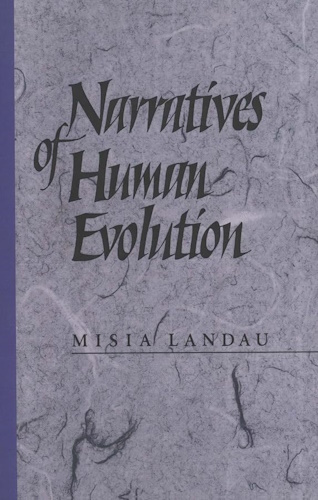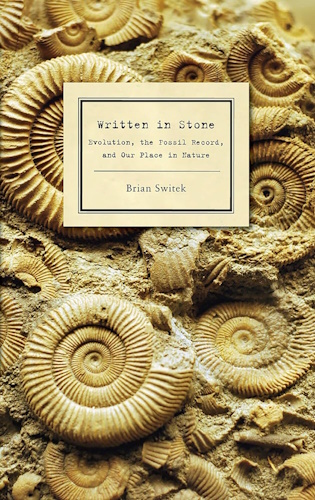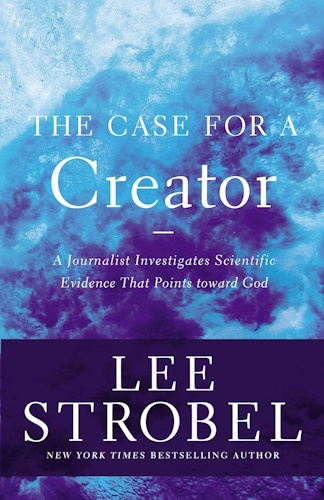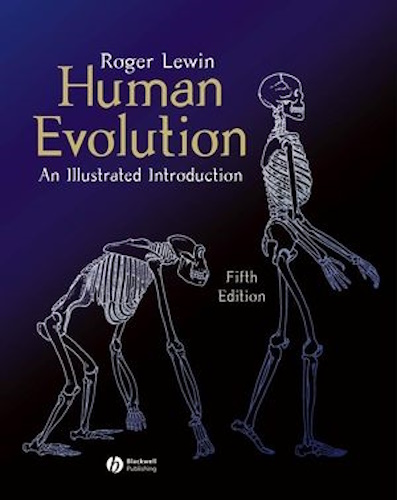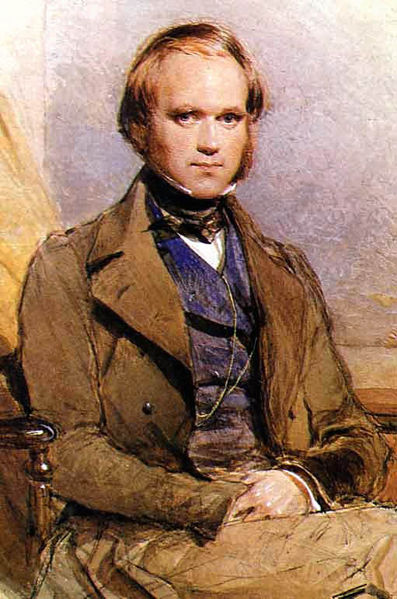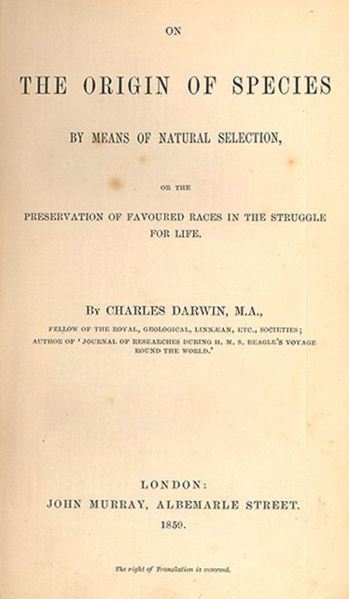![]()
Going Where Darwin Feared to Tread
Scientists Begin to Decode
the History of Human Evolution
by
David Brown
Washington Post Staff Writer
Thursday, February 12, 2009; Page A01
![]()

In biology's most famous book, "The Origin Of Species," Charles Darwin steered clear of applying his revolutionary theory of evolution to the species of greatest interest to his readers -- their own.
He couldn't avoid it forever, of course. He eventually wrote another tome nearly as famous, "The Descent Of Man." But he knew in 1859, when "Species" was published, that to jump right into a description of how human beings had tussled with the environment and one another over eons, changing their appearance, capabilities and behavior in the process, would be hard for people to accept. Better to stick with birds and barnacles.
Darwin was born 200 years ago today (02/12/09). "On the Origin of Species" will be 150 years old in a few months. There's no such reluctance now.
The search for signs of natural selection in human beings has just begun. It will ultimately be as revelatory as Newton's description of the mathematics of motion 322 years ago, or the unlocking of the atom's secrets that began in the late 1800s.
The inundation of data since the completion of the Human Genome Project in 2003, and the capacity to analyze it at the finest level of detail -- the individual DNA nucleotides that make up the molecule of heredity -- are giving us a look at humanity's autobiography in a way that was once unimaginable.
In small, discrete changes in our genes that have accumulated over time, we are seeing evolution's tracery, as durable as it is delicate. It is slowly revealing how climate, geography, disease, culture and chance sculpted Homo sapiens into the unique and diverse species it is today.
Biologists are discovering that the size of our limbs and brains, the enzymes in our spit and stomachs, the color of our skin, the contour of our hair, and the armament of our immune systems are each to some degree the products of evolutionary adaptation. They are the hard-earned, but unintended, bequests of our ancestors' struggle to survive.
This, of course, is no surprise. Darwin knew it was so -- and he'd never heard of a gene.
The surprise is our capacity to see the mechanical changes -- for genes are nothing more than little machines operating in water -- that are evolution's working material. Natural selection has moved beyond metaphor. We can see the thing itself.
"Why are we the way we are? That has always been a sort of fundamental question, hasn't it? But it is only now that we can really begin to address it," said Carlos D. Bustamante, a professor of computational biology at Cornell University. "Over the ages we catalogued the anatomical differences between people and eventually biochemical differences, too. Now we can get down to the molecular differences. We really mean it this time."
Understanding which of our 25,000 genes have changed since we climbed out of the trees may have practical results as well. Many of mankind's most common health problems -- hypertension, diabetes and obesity are examples -- may partly be consequences of natural selection that occurred long ago, in a world far different from today's. Identifying which genes have undergone the most rapid evolution, and then figuring out what they do, may shed important light on these ailments.
Out of this research may come one other tantalizing insight: How, if at all, are we still evolving?
Promising Leads, Few Complete Answers
At the moment, though, there are a lot more promising leads than mysteries solved.
More than 300 human genes show strong evidence of recent mutations that favored survival in the face of new threats or novel environments, and consequently spread quickly through populations. For only a few, however, have researchers nailed down the full story of what the mutations did and how they helped our ancestors.
"We are really just beginning to see the landscape of human evolution. We're working toward a coherent picture of how we evolved over time," said Pardis Christine Sabeti, an evolutionary biologist at Harvard University.
Some of that landscape is visible on a map of the world. Many of the differences in appearance and physiology between ethnic groups are products of natural selection that occurred eons ago in the geographic regions those groups still inhabit.
Natural selection, of course, didn't begin just when human ancestors and chimpanzees diverged 6 million years ago and we became our own, distinct lineage. Much of what makes us special (at least in our own eyes) was already underway.
Take our brains.
The marvelous things they can do -- and the use of language is right at the top of the list -- didn't leap fully formed from a profoundly inferior predecessor. Instead, our brains are the result of small structural changes, some more important than others, accumulating since deep in evolutionary time. That appears to be the case of a gene called FOXP2.
When a mutation occurs in that gene in people (a rare event), they lose the ability to make sense of language and to produce coherent speech. When the gene is knocked out in birds, their songs are incomplete and inaccurate. In bats, it seems to be involved in echolocation.
Across many species, the gene appears to play a role in processing sound and using the information to perform an action -- making an intelligible grunt, singing the right song or avoiding a collision with a cave wall. And it turns out that human beings have two mutations in the FOXP2 gene that chimpanzees don't. What do they mean for the functioning of our brain cells? Nobody knows, but the betting is: something that may be key to humans' unique capacity for language.
Curiously, sometimes evolution lurches forward when a gene stops working. Making room in our skulls for our outsize brains may have been helped by such an occurrence.
Humans have completely lost the function of a gene called MYH16. It's still there, but scientists can tell from the DNA sequence that it underwent a "frameshift mutation" and no longer works.
MYH16 codes for a protein that is a component of some muscles. In chimpanzees and other primates, it is active only in muscles of the head, especially ones used for chewing. Some scientists speculate that the mutation that disabled the gene freed our skulls of the physical constraints required to anchor large, powerful jaw muscles. That, in turn, may have helped make room for the brain's rapid enlargement.
Brain size itself appears to be controlled by at least four other genes; mutations in them cause microcephaly, a birth defect characterized by a small head and mental retardation. These genes have been changing more rapidly in primates than in rodents, and the pace of that evolution has been especially fast in humans and chimps. That's no surprise; they're smart and we're smarter.
Beneficial Traits Spread
It takes time for a mutation that produces an advantageous genetic trait to sweep through a population. How quickly that occurs depends, in part, on how big an advantage the change provides.
With many traits -- big brains, upright posture, scant body hair, color vision -- the advantage is so great that the DNA sequence for them reaches what geneticists call fixation. Everyone has it.
But fixation isn't always the endpoint. A gene-altering mutation can sweep through one population but remain virtually absent in another. That's because all that's required for a mutation to spread is for it to improve its carriers' chance of surviving and reproducing under their current circumstances. And circumstances are not the same for all people and can change over time.
That was certainly the case 2,000 generations ago, when groups of modern humans began to leave Africa and settle nearly every corner of a geographically, climatically and botanically diverse planet. Their genes changed as a result of their journeys, and the genes of people who stayed in Africa continued to evolve, too, as life there changed.
All of this occurred by chance, and the result is the world of human diversity we see today.
"Evolution in a pure Darwinian world has no goal or purpose," biologist Edward O. Wilson wrote in the introduction to a collection of Darwin's writings a few years ago.
In other words, evolution is not like an arrow shot at a target, but like a blind dog stumbling across an obstacle-strewn landscape. This is what caused Darwin to shy away from talking about evolution and mankind in the same breath, at least at the beginning. It is still the heresy that quickens the creationist's pulse.
The current conservative estimate is that 10 percent of our genome has undergone "positive selection" since modern humans emerged about 200,000 years ago. Not surprisingly, the changes that tell the clearest stories involve basic needs -- food, protection from the elements, resistance to disease.
The adaptation to malaria is the best and oldest example.
Children and pregnant women are at highest risk of dying from malaria (and about 900,000 still do each year). Any mutation that protects victims from early deaths and lets them reproduce will spread widely, because the survivors are more likely to carry it -- and therefore pass it on to their descendants.
Over the past 10,000 years, such protective mutations have arisen and been "naturally selected" not once, but several times. They emerged in places where malaria was endemic -- West Africa, Southern Africa, the Middle East -- and took hold independently of one another.
So great was their value that they became widespread, even though they can cause problems of their own -- sickle cell anemia, thalassemia and G6PD deficiency, diseases most prevalent in places where malaria was a scourge.
Matching Skin Tone to Sunlight
Non-living threats have also exerted heavy pressure on our genes over the eons. Sunlight is the most obvious one.
Several mutations that lighten skin swept through the out-of-Africa migrants, though different populations have different "suites" of altered pigment genes. That probably explains why fairness in Europeans often extends to hair color, while in Asians it almost never does.
Curiously, the reason sunlight is such a driving force isn't entirely clear.
Too much sun can burn the skin and damage folate, a vitamin essential to fertility and embryo growth. Too little blocks formation of Vitamin D, which is crucial for absorbing the calcium necessary for bones and muscle. Whatever the reason, having the right skin color for one's home latitude has clearly been a huge evolutionary task.
Of course, it's possible it could have happened by chance.
The random death of individuals carrying some genes and the chance survival of people bearing others -- called genetic drift -- has also shaped our genomes, most biologists believe. But the fact that so many mutations affecting skin color occurred in non-African populations and went to fixation (or close) makes chance an unlikely explanation.
"A big thing that makes you think this is natural selection is when you see 'convergent evolution' -- different mutations with the exact same biological function," said Sabeti, the Harvard geneticist. "Lightning strikes once, but it doesn't often strike twice."
Researchers are now showing that culture -- what humans have created -- also can drive natural selection with as much force as disease and the environment.
The ability to digest milk in adulthood, called lactase persistence, exists in more than 90 percent of Scandinavians but only 1 percent of Chinese. It is much more common in places where cattle, goat and camel herding are common -- and milk is a big part of the diet -- than in populations (such as hunter-gatherers) where herding is more rare.
Most Europeans have a mutation in the lactase gene that allows them to digest milk as adults. But it is virtually absent in Africans, many of whom can also drink milk.
In 2006, scientists found three previously unknown lactase mutations that swept through East African herding cultures in the past 5,000 years, long after the European one emerged.
"The reason for the advantage is not entirely clear," said Sarah Tishkoff, a geneticist at the University of Pennsylvania who made the discovery. "It could be the protein in the milk; it could be the fat; it could be that it's a source of water in an arid region -- or none of the above."
Are Humans Still Evolving?
Which brings us to the question: In a world of intensive-care units, vitamin pills, sunscreen, down jackets and (for many) too much food, has evolution ground to a halt? Or will global warming, urban crowding, HIV infection, the obesity and diabetes epidemics, and the galloping changes in technology crank it up again?
The answer seems to be: Nobody knows. But something is probably still happening.
"I definitely think people will come under new pressures," said Eugene E. Harris, a biological anthropologist at Queensborough Community College in New York. "There are going to be micro-evolutionary adjustments that occur over time. Culture is imperfect and is not going to buffer all of us."
But Bustamante, the computational biologist from Cornell, cautions that it takes 200 generations for natural selection to show its hand -- and that's when it's working full tilt.
"What is going to happen in 200 generations? I don't think we have any mathematical models to answer that," he said.
Darwin, like evolution, took his time. He is the patron saint of dawdlers.
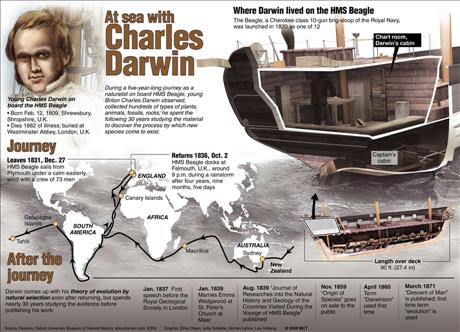
He got off the HMS Beagle, the ship that took him on the trip that taught him almost everything, on Oct. 2, 1836. He then spent 22 years in study, experiment and cogitation -- capped with the equivalent of an all-nighter -- to come up with his theory. He crashed it into print in a dead heat with Alfred Russel Wallace, a young man in a hurry, presenting it on the night of July 1, 1858, before the Linnean Society of London.
The truth is that even 200 years from today, on Darwin's 400th birthday, when we're all dead, our descendants still won't have a clue as to what the traits just now starting to evolve may be.
Evolution moves slowly, and it grinds exceeding small. Darwin knew this, and wouldn't be surprised.
![]()
![]()
Disclaimer:
Some material presented will contain links, quotes, ideologies, etc., the contents of which should be understood to first, in their whole, reflect the views or opinions of their editors, and second, are used in my personal research as "fair use" sources only, and not espousement one way or the other. Researching for 'truth' leads one all over the place...a piece here, a piece there. As a researcher, I hunt, gather and disassemble resources, trying to put all the pieces into a coherent and logical whole. I encourage you to do the same. And please remember, these pages are only my effort to collect all the pieces I can find and see if they properly fit into the 'reality aggregate'.
Personal Position:
I've come to realize that 'truth' boils down to what we 'believe' the facts we've gathered point to. We only 'know' what we've 'experienced' firsthand. Everything else - what we read, what we watch, what we hear - is what someone else's gathered facts point to and 'they' 'believe' is 'truth', so that 'truth' seems to change in direct proportion to newly gathered facts divided by applied plausibility. Though I believe there is 'truth', until someone representing the celestial realm visibly appears and presents the heavenly records of Facts And Lies In The Order They Happened, I can't know for sure exactly what "the whole truth' on any given subject is, and what applies to me applies to everyone. Until then I'll continue to ask, "what does The Urantia Book say on the subject?"
~Gail Bird Allen
![]()
![]()

